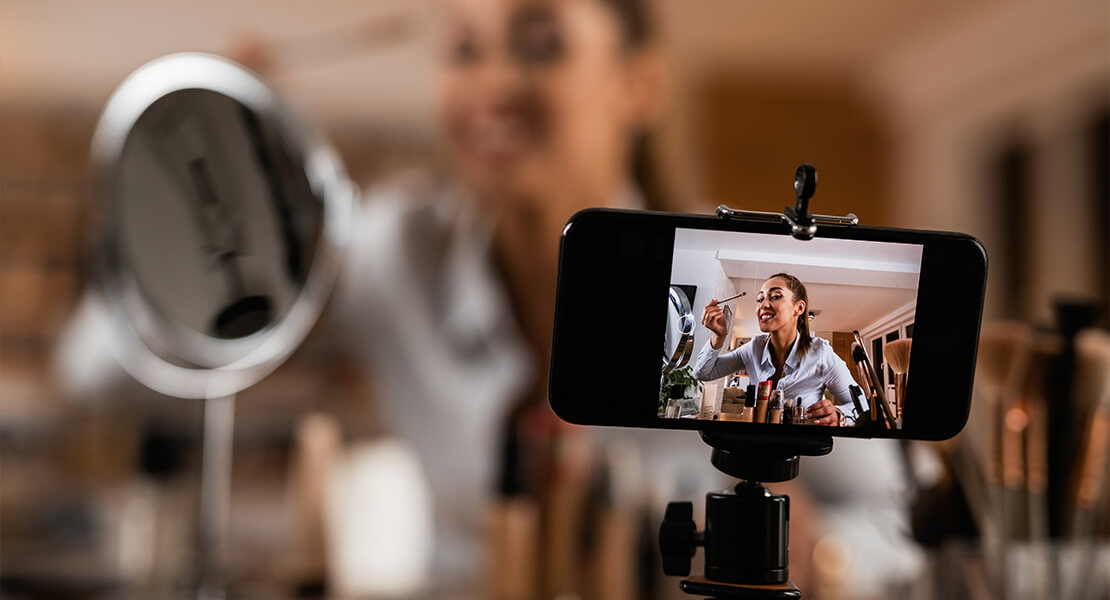
When it comes to video production for social media, one size definitely doesn’t fit all. Each platform has its quirks, algorithms, and audience expectations. That means your Instagram Reel isn’t going to perform the same way on YouTube Shorts, and your polished YouTube video might fall flat on TikTok.
If you want to maximise engagement and get your content in front of the right eyes, you need to tailor your video strategy for each channel. Social media users scroll quickly, have varied preferences, and engage with content differently depending on the platform. That’s why a nuanced, targeted approach is critical—not only for visibility but for long-term audience growth.
Think of each platform as a different stage with its own lighting and audience—it’s still your performance, but you need to tweak your delivery. Whether you’re a solo creator, a small business owner, or part of a marketing team, understanding these differences will help you produce videos that resonate and convert. Let’s break down the essentials: format, length, and platform-specific tips that actually work.
Know Your Formats: Square, Portrait, Landscape
Choosing the right format is the first step to stopping the scroll. For Instagram and TikTok, vertical (9:16) reigns supreme. These apps are designed for portrait viewing, and anything that doesn’t fill the screen just looks off. Facebook and LinkedIn tend to favour square (1:1) for mobile users, while YouTube still leans towards landscape (16:9) for long-form content. If you’re filming once and repurposing across platforms, consider framing your shot in a way that can be easily cropped into multiple formats. This ensures visual consistency and avoids awkward cropping that could cut off key visuals or text.
Also, pay attention to safe zones—leave space around the edges so that crucial elements aren’t hidden by captions or buttons. Testing your content in different aspect ratios before posting can help you identify the best fit and make quick adjustments. Formats influence perception—portrait feels personal, landscape feels cinematic, and square strikes a balance. Choosing the right one can shape how your message is received.
Nail the Length: Short, Sharp, and Scroll-Stopping

Attention spans on social media are brutal. On platforms like TikTok and Instagram Reels, aim for videos under 30 seconds. Facebook and LinkedIn give you a bit more breathing room, with 1 to 2 minutes being the sweet spot. YouTube Shorts need to be under 60 seconds, while standard YouTube videos can range from 3 to 10 minutes depending on the content type.
The golden rule? Say more with less. Hook viewers in the first 3 seconds and cut any fluff. Shorter videos perform better because they encourage completion, which is a major engagement metric. A completed view signals to the algorithm that your video is worth showing to others. Don’t waste time with intros—get to the point quickly and deliver value early. Use bold visuals, motion, or text to grab attention immediately.
Also, experiment with storytelling arcs that fit within these compressed timeframes—whether it’s a problem-solution setup, a quick tip, or a teaser. Knowing how to communicate impactfully in under a minute is a skill that pays off across all platforms.
Optimise for Audio On and Off
While video is primarily a visual medium, sound plays a crucial role in storytelling—yet many users scroll with the sound off. That’s why subtitles and on-screen text aren’t just helpful; they’re essential. Captioning ensures your message gets across no matter the viewer’s setting. However, that doesn’t mean neglecting audio quality.
Good background music, clean voiceovers, or engaging sound effects can greatly enhance the viewer experience for those watching with sound on. Use audio strategically to guide emotion, pace, and tone. For platforms like YouTube or LinkedIn, where sound is more commonly on, you can lean into voice-driven narratives or expert commentary. Always preview your video with and without sound before publishing to ensure it remains effective either way.
Additionally, consider using dynamic text animation to complement the audio and highlight key messages. Tools like auto-captioning in Adobe Premiere Pro or apps like Kapwing can streamline this process. Don’t underestimate how sound can elevate emotional storytelling—a well-placed beat drop or ambient background noise can create atmosphere and make your video more immersive. It’s all about accessibility and engagement—sound should enhance the experience for some while never being a barrier for others.
Leverage Analytics and Feedback Loops
Your first few posts might not go viral—and that’s perfectly fine. What matters is learning what works. Use platform analytics to measure metrics like watch time, click-through rates, completion rates, and viewer retention. These data points help you understand not just how many people saw your video, but how they interacted with it.
Look at when viewers drop off or which parts get rewatched, and use those insights to guide future content. Comments and messages also offer valuable qualitative feedback. If viewers repeatedly ask for tutorials or behind-the-scenes content, deliver on that.
The more you pay attention to what resonates, the more refined your production and messaging will become. Over time, patterns will emerge—perhaps your audience prefers fast-paced content, or they respond better to certain topics or formats. You can also A/B test different video thumbnails, titles, and intros to see what drives more clicks.
Data isn’t just numbers; it’s a blueprint for better content. Incorporate feedback into your creative process to keep evolving, and don’t be afraid to revisit older videos that performed well—there’s often gold to be mined in what’s already worked.
Batch and Schedule for Consistency
Creating quality video content takes time, but it becomes manageable when you adopt a batching approach. Filming multiple videos in one session not only saves setup time but also helps maintain consistency in style and tone.
Write scripts or outlines in advance, then shoot several short videos back-to-back. This workflow is particularly useful if you’re managing content across several platforms. Once produced, use scheduling tools like Meta Business Suite, Buffer, or Later to plan posts in advance.
Consistency builds familiarity and trust—regularly showing up in your audience’s feed is more important than going viral once. With a bank of pre-produced content, you can stay ahead of trends, maintain quality, and avoid the last-minute scramble. It also frees up time for creative thinking and marketing.
You can theme your batches by topic, audience segment, or campaign goal. For example, one session might focus on how-to content, while another might spotlight customer testimonials or product features. This approach is especially effective for small teams or solo creators who need to maximise output with limited resources. Over time, batching becomes second nature and allows you to deliver steady, professional content that strengthens your brand presence.Top of Form
Platform-Specific Tips That Actually Work

Prioritise Reels over static posts—they get better reach. Use trending audio where possible, add captions (most people watch with sound off), and keep your branding subtle but present. Reels tend to benefit from higher discoverability via the Explore page and hashtag placements. Make use of features like Remix and Collabs to increase engagement and reach new audiences.
Carousel posts can also perform well when they tell a visual story—consider combining Reels with supporting carousel content. Monitor your analytics to see which Reels formats work best—voiceover, behind-the-scenes, or tutorial-style. Consistency is key; aim to post Reels several times a week to stay top of mind.
TikTok
Be authentic. Polished videos don’t always perform well here. Jump on trends early, use text overlays creatively, and post regularly to stay visible in the feed. Make your first few seconds visually interesting—TikTok viewers scroll fast and won’t hesitate to swipe away. Duets and stitches are great ways to build interaction with other creators and get noticed by their audiences. Use niche-relevant hashtags to reach the right crowd, not just broad or viral ones. Don’t be afraid to experiment—humour, storytelling, and raw behind-the-scenes clips often outperform overly produced content.
YouTube
Invest in a good thumbnail and title. These matter as much as the video itself. For Shorts, get straight to the point, and for longer content, deliver value consistently to improve watch time. Use timestamps and chapters in longer videos to make them more navigable and viewer-friendly. Encourage likes and comments through on-screen cues or end-of-video prompts to drive engagement. Make sure your channel art and descriptions are optimised for SEO, as YouTube is also a search engine. Regularly assess your audience retention stats to identify where viewers drop off and refine your content accordingly.
Square videos perform best, especially for mobile. Include subtitles, and consider adding a strong CTA early on. Engagement signals (likes, comments, shares) help boost visibility. Facebook favours native uploads over external links—upload directly for better performance. Pinning high-performing videos to the top of your page can keep them visible longer and attract new viewers. Live video still performs exceptionally well for real-time engagement, so don’t overlook it. Use Facebook’s Creator Studio to schedule content and analyse which posts get the most traction.
Go for professional tone and educational value. Native uploads (not external links) perform better. Think thought leadership, behind-the-scenes, or helpful tips in under 2 minutes. Use strong hooks in the first few seconds to capture attention in a crowded feed. Tag relevant team members or industry pages to increase reach organically. Videos that feature real employees or leaders often perform better than generic stock-style content. Avoid hard-selling—focus instead on adding value, sharing insights, or solving industry problems.
Don’t Forget the Tech Basics
Even on mobile, quality matters. Clean audio, decent lighting, and a steady frame go a long way. Invest in a basic microphone and a tripod if you’re shooting often. Editing apps like CapCut, InShot, or Adobe Premiere Rush can polish your content without a steep learning curve.
A clip filmed in natural light, framed properly, and with crisp sound will always beat a shaky, dimly lit one—no matter how good the idea is. Don’t underestimate the power of good lighting: a ring light or softbox can transform the quality of your video, even in small spaces. For those using smartphones, consider manual camera apps that give you control over exposure, focus, and frame rate.
Also, think about your background—it should be uncluttered and relevant, avoiding distractions that could pull focus from your message. Proper storage and battery backup are worth considering too, especially when batch filming. With just a few small upgrades, your tech setup can rival much more expensive gear.
Repurposing Without Recycling
Repurposing is smart. Recycling is lazy. Adapt your content for each platform instead of just reposting. For instance, take a horizontal YouTube video and slice out a punchy 15-second clip for Reels with new captions and music. Or turn a TikTok trend into a branded tip that aligns with your business tone on LinkedIn. The goal is to retain the core message while presenting it in a way that fits the platform’s format, tone, and audience expectations.
A successful repurposing strategy also considers visual elements—like font choices, transitions, or on-screen graphics—that reflect each channel’s style. You can even turn a single video into multiple touchpoints: a teaser for Stories, a tutorial on YouTube, a quote card on LinkedIn, and a full breakdown in your blog. By creatively reimagining your assets, you save time, increase ROI, and stay top of mind with your audience without becoming repetitive. Think of repurposing as recontextualising, not duplicating.
Embrace Storytelling as Strategy

In the noisy world of social media, storytelling is what sets compelling content apart. Rather than simply listing features or facts, wrap your message in a narrative that your audience can relate to. Whether it’s a customer testimonial, a day-in-the-life snapshot, or a challenge-to-solution journey, stories help people connect on a human level.
Emotional resonance drives engagement—people are more likely to share or comment on a video that made them laugh, reflect, or feel inspired. Use structure to your advantage: start with a hook, build tension, and end with a resolution that reinforces your message or call to action.
Strong storytelling also creates continuity across your brand content. When viewers recognise a recurring tone, visual theme, or character, they become more invested. Stories are also memorable—audiences retain messages better when delivered through narrative instead of data. Use music, pace, and tone to elevate your story’s emotional pull. And don’t forget authenticity—your audience can spot manufactured sentiment a mile away.
Focus on being real, relatable, and relevant. Whether you’re sharing a behind-the-scenes glimpse or documenting a customer’s transformation, keep the storytelling focused on human emotion and tangible impact. Great stories aren’t always dramatic—they can be as simple as showing growth, problem-solving, or small wins. The key is emotional truth.
When your audience sees themselves in your story, you’ve made a real connection. Pair this with visual cues, consistent tone, and a message that aligns with your brand values, and you’ll not only inform but deeply engage your viewers.
Collaborate to Expand Reach
Collaboration can amplify your video strategy and introduce your brand to new audiences. Partner with creators, influencers, or even customers who align with your values and content style.
Co-created content feels more authentic and often performs better in terms of reach and engagement. You can create joint Reels, feature guests in YouTube videos, or run TikTok challenges that spotlight user participation. These partnerships not only diversify your content but also build credibility through social proof. Just ensure that any collaboration is mutually beneficial and aligns with both parties’ goals and audiences.
Before diving in, set clear expectations and responsibilities for everyone involved—who’s creating, who’s posting, and what the success metrics look like. Cross-promoting the video on multiple accounts can also expand reach and visibility.
Additionally, think beyond influencers—industry experts, loyal customers, or local business partners can bring unique voices and authenticity. After each collaboration, evaluate what worked and what could be improved for next time. Done right, collaborations are more than just content—they’re community-building tools that spark deeper connections and organic growth.
You can also repurpose collaborative content into new formats, like blooper reels, recap posts, or testimonial edits to maximise mileage. Track engagement and follow-up with co-creators to deepen the relationship and turn one-time projects into ongoing partnerships that grow alongside your brand.
Final Words
Social media video production is less about perfection and more about connection. People don’t want to be sold to—they want to be entertained, educated, or inspired. If you get the format right, keep the length tight, and speak the language of each platform, your videos will do the talking.
It’s not about going viral overnight; it’s about showing up consistently, delivering value, and building trust with your audience one video at a time. Treat video as an ongoing dialogue, not a one-time campaign.
Engage in the comments, ask for feedback, and test new styles or formats to see what resonates. Over time, this approach builds a loyal community that looks forward to your content. Whether you’re just starting or levelling up, keep the focus on your audience and their experience. With intention, creativity, and consistency, video can become your most powerful tool for storytelling and growth. If you’re interested in learning how to take your social media video production to the next level, get in touch with us at Spiel for a free consultation.

